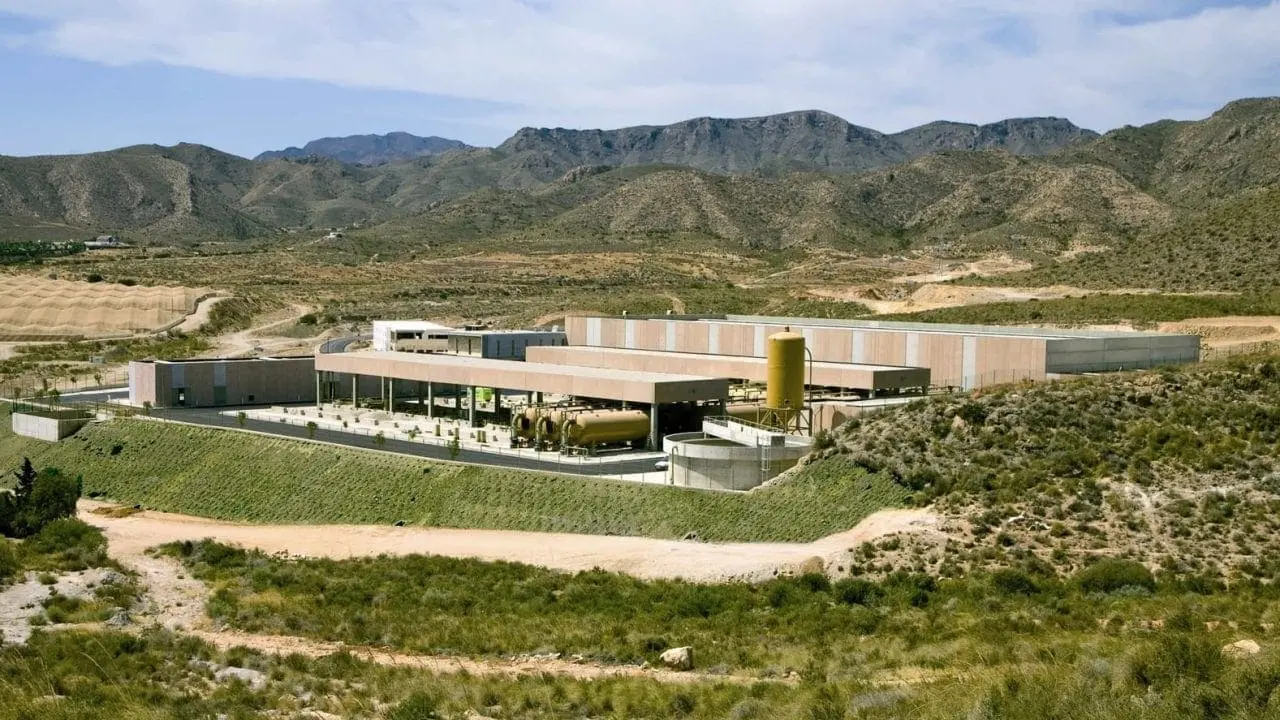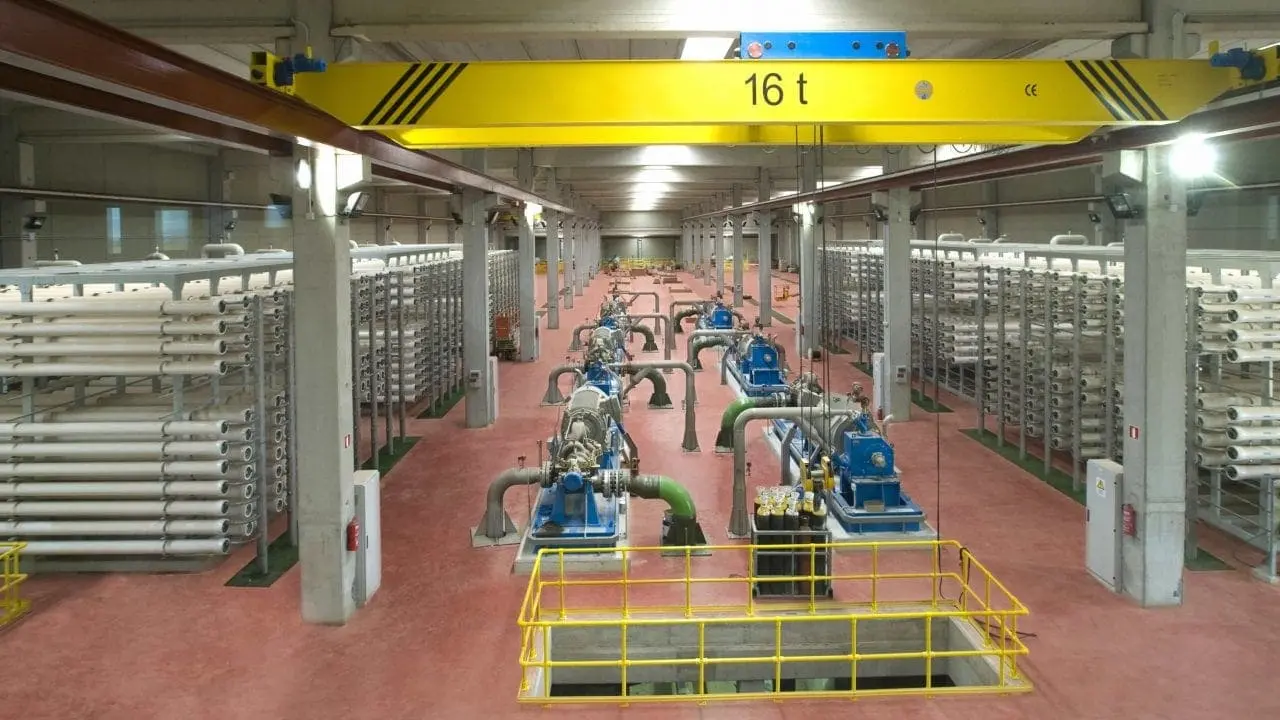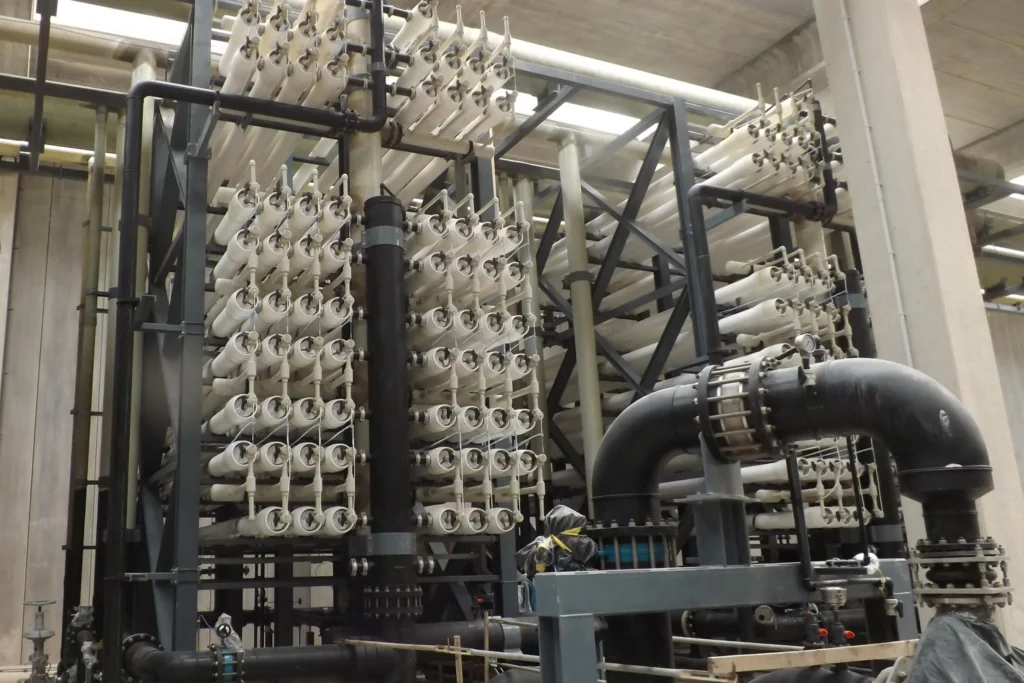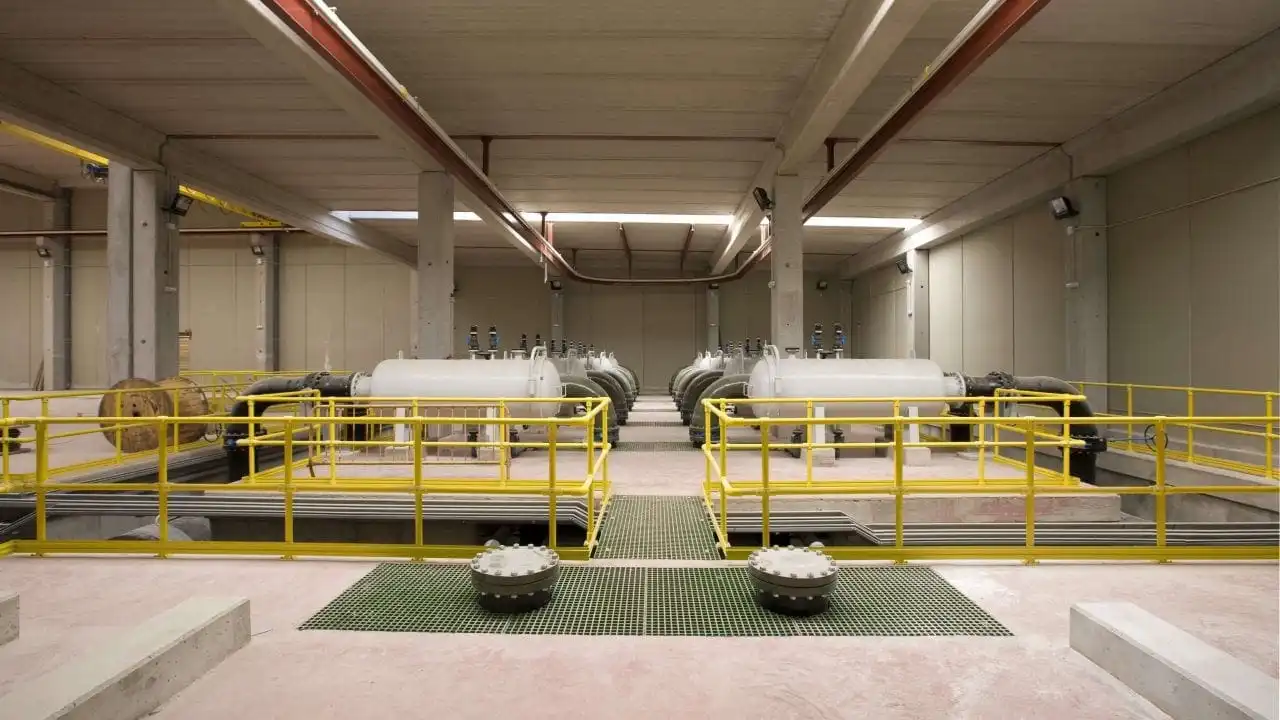Table of Contents
Overview of Desalination Plants in Spain
Lanzarote the first desalination plant in Europe was built in 1964. Since then, Spain built several advanced water treatment plants to meet the water consumption needs of the people. Spain’s desalination plant capacity is ranked fifth surpassing Saudi Arabia's and UAE's desalination capacity globally. Desalination in Spain is a key pillar of the AGUA (Actions for Water Management and Use) Program promoted by the Government in 2004.
Over the years several desalination plants were built in Spain of various capacities and enhanced technologies. The Lanzarote desalination plant and the Barcelona desalination plant are two major sources of drinkable water in Spain. Also, Other desalination plants like La Palma, Aguilas & Valdelentisco seawater desalination plants equally contribute to the water consumption needs of Spain.
Through strategic desalination projects, the drinking water demand of people on the Mediterranean coast and local Islands is fulfilled every day. Spain continues to excel as a leader in the desalination industry providing potable drinking water.
Top Desalination Plants in Spain- (By Capacity)
| Project Name | Year | Location | Capacity | Project Cost |
| Valdelentisco Desalination Plant | 2008 | Murcia | 240,000 m3/day | EUR 128 Million (USD 189 Million) |
| Aguilas Sea Water Desalination Plant | 2011 | Murcia | 210,000 m3/day | EUR 268 Million (USD 287 Million) |
| Barcelona Sea Water Desalination Plant | 2009 | Municipality of EI Prat de LIobregat | 200,000 m3/day | EUR 230 Million (USD 247 Million) |
| Campo de Dalias Reverse Osmosis Desalination Plant | 2015 | Campo de Dalias | 97,200 m3/day | EUR 130 Million (USD 139 Million) |
| Canal de Alicante Desalination Plant | 2006 | Southeastern Coast of Spain
| 50,000 m3/day | EUR 11.6 Million (USD 12.8 Million) |
Here is a list of popular desalination plants in Spain that serve as a major water resource of fresh water for millions of people in coastal & urban areas.
Find Desalination Plant Projects and Tenders in SpainClaim your Free leads!
Valdelentisco Desalination Plant
| Project Name | Valedelentisco Desalination Plant |
| Location | Murcia |
| Commissioned in | 2008 |
| Capacity | 240,000 m3/day |
| Built By | Cadagua and Ferrovial Agroman |
| Operated By | Cadagua |
The Vaildelentisco Desalination Plant is one of the largest SWRO desalination plants in Spain. It was initially built with a capacity of 200,000 cubic meters of potable drinking water per day. However, over the years, it was expanded to produce 240,000 m3/day.
It is noted as the first- Europe's largest desalination plant and the third largest in the world. The Spanish government water agency AcuaSegura (Acuamed) awarded the DBO contract to a joint venture of Cadagua and Ferrovial Agroman.

In 2012, Cadagua was appointed as the sole O&M (Operation & Maintenance) contractor of the plant which was further extended from four years to six more years. In later years, the Vaildelentisco desalination plant was undertaken by Aguas de las Cuencas Mediterranean (Acuamed) a state-owned water utility.
Aguilas Sea Water Desalination Plant
| Project Name | Aguilas Sea Water Desalination Plant |
| Location | Murcia |
| Commissioned in | 2011 |
| Capacity | 210,000 m3/day |
| Built By | Sacyr Concessions |
| Operated By | Sacyr Concessions |
The Aguilas desalination plant performs the SWRO desalination technology and is built by Acuamed ( A state-owned water utility). The construction company is the UTE Desakadora Aguilas Guadalentin. This seawater desalination plant began its commercial operations in 2011 with a production capacity of 210,000 m3/day.
The desalinated seawater produced here fulfilled the water consumption needs of 130,000 people in Spain. Additionally, it supplies water to the municipalities of Lorca and Aguilas. The Sacyr Infrastructure and Ferrovial designed, supplied, and built the desalination plant on a DBO contract basis.

The Aguilas desalination plant is equipped with an energy recovery system through isobar chambers for pressure exchange through a DWEER device. The electrical power is generated in 56.7 Megawatts and is widespread in 9,600 hectares.
Find Desalination Plant Projects and Tenders in SpainClaim your Free leads!
Barcelona Sea Water Desalination Plant
| Project Name | Barcelona Sea Water Desalination Plant |
| Location | Municipality of EI Prat de LIobregat |
| Commissioned in | 2009 |
| Capacity | 200,000 m3/day |
| Built By | Aguas Ter Llobregat (ATLL) |
| Operated By | Aguas Ter Llobregat (ATLL) |
The Barcelona Sea Water Desalination Plant is one of the largest RO (Reverse Osmosis) based desalination plants in Europe. It was commissioned in 2009 and was awarded the “Desalination Plant of the Year” by the Global Water Awards in 2010. This desalination plant supplies fresh drinking water to 1.3 Million people in the Municipality of EI Prat del Llobregat. It is also known as the Llobregat plant of Barcelona
The Catalan Government awarded this project to ATLL in 2005. Further, the DBO (Design, Build, Operate) contract was assigned to Degramont and Aguas de Barcelona (Agbar) for EUR 159 Million (USD 170 Million) in 2007. This contract was assigned to the JV (Joint Venture) to operate it for two years from the time of commission.
Barcelona Sea Water desalination plant was co-financed by the EU (European Union) by contributing EUR 150 Million. The Spanish Ministry of Environment invested EUR 52 Million, while ATLL invested about EUR 28 Million. The total project cost is estimated as EUR 230 Million (USD 253 Million).
Campo de Dalias Reverse Osmosis Desalination Plant
| Project Name | Campo de Dalias Reverse Osmosis Desalination Plant |
| Location | Campo de Dalias |
| Commissioned in | 2016 |
| Capacity | 97,200 m3/day |
| Built By | Acuamed |
| Operated By | Veolia Water |
The Campo de Dalias desalination plant was built by a consortium of Veolia Water and several other Spanish companies. It includes Sando, Inypsa, and Montajes. The contract awarded was a DBO contract with a concession period of 15 years.
This desalination plant has provided potable drinking water since 2016. The plant construction began in 2013 and was completed in November 2014. The desalinated water produced here is sufficient to fulfill the human consumption water consumption needs of 300,000 people.

Veolia Water is in charge of the process component and operates this plant 310 days a year. Its isobar solar energy recovery system with solar panels ensures the sustainability of the desalination plant through renewable energy in the future. Additionally, this reduces the overall energy consumption of the desalination process.
Canal de Alicante Desalination Plant
| Project Name | Canal de Alicante Desalination Plant |
| Location | Southeastern Coast of Spain |
| Commissioned in | 2006 |
| Capacity | 50,000 m3/day |
| Built By | GS Inima and SACYR |
| Operated By | GS Inima and SACYR |
The Canal de Alicante Desalination Plant has a water production capacity of 50,000 cubic meters of water per day. This desalination plant draws seawater & brackish water from 18 wells and conducts an RO desalination process to produce fresh drinking water.
The Alicante desalination plant was built in two phases. It includes Alicante I and Alicante II desalination plants. Its commercial operations began in 2006, this desalination plant was built and is operated by GS Inima and SACYR.

Recently, Mancomunidad de Los Canales Del Taibilla awarded the JV GS Inima and SACYR the maintenance and operation contract extended for two years with a possible extension of the upfront contract for another two years. It was awarded EUR 11.6 Million (VAT included) for the maintenance and operation of the Alicante desalination plant.
Factors Contributing to the Rise of Desalination Plants in Spain
Several factors such as water scarcity in the Mediterranean coast, limited natural resources, and saline intrusion led to the rise of Desalination plants in Spain. Further, reduced rainfall due to climate change and overexploitation of natural water resources led to an increased dependence on desalination plants.
Government initiatives like the AGUA program in 2004 included the installation and expansion of desalination plants as a key strategy to secure water resources for the people of Spain.
Sectors like Agriculture and Tourism increase the overall water demand in Spain thus, driving the need for desalination plants in Spain.
Challenges to the Desalination Industry in Spain
Desalination plants in Spain are renowned as a major source of potable drinking water. However, there are several challenges prone to the desalination industry in Spain. Below listed are a few major challenges to desalination plants in Spain:
- Environmental Impact: The brine produced as a byproduct of the desalination process is released into the ocean affecting marine life and ecological systems. Initiatives must be taken to promote ecological transition.
- Over-Reliance: Depending on the desalination plants as a major water source may result in a risk in case of unforeseen droughts or increased demand.
- Cost of Desalination Water: The desalinated water cost can be expensive compared to the low cost of natural water resources. Thus, reducing the demand for desalinated water.
- High-Cost of RO Technology: The desalination plants using RO (Reverse Osmosis) are highly energy-intensive and consume a huge amount of power. This can increase the carbon footprint of desalination plants in Spain.
Conclusion
Desalination plants in Spain are renowned as the emerging global leaders in the desalination industry. Production of large volumes of desalination water, sufficient to supply many regions facing severe drought and water shortage problems.The Spanish government made several initiatives to build and expand desalination plants and secure sources of freshwater for drinking.
The Barcelona desalination plant proved to be a major source of drinking water for millions of people in Spain. Several other desalination plants such as the Alicante desalination plant & Lanzarote desalination plant fueled potable drinking water supply over the years. Thus, desalination plants in Spain continue to secure water supply for the future.
Also Read: Microsoft to Invest $2.1 Billion for Data Center Infrastructure Expansion in Spain
FAQ
What is the biggest desalination plant in Spain?
The Valdelentisco Desalination Plant emerged as the biggest desalination plant with a production capacity of 240,000 cubic meters of potable water per day.
Does Barcelona have a desalination plant?
Yes, the Barcelona desalination plant is one of the major sources of water for domestic purposes and agricultural irrigation. It produces 200,000 m3/day.
Why does Spain use desalination?
Water scarcity and frequent droughts led to dependence on desalination plants to meet the water consumption needs of its people. Additionally, the water produced is used for irrigation purposes too.
Is Barcelona water drinkable?
Barcelona desalination plant meets high quality water standards which makes it safe and healthy to drink.
Where does Lanzarote get its drinking water from?
Lanzarote desalination plant also known as the Arrecife desalination plant is a major source of drinking water for its people in Lanzarote.
Connect with decision-makers of the latest desalination plant projects in Spain for business opportunities.
Subscribe to our database on Desalination Plant Projects and Tenders in Spain to access reliable and high-quality insights on upcoming, in-progress, and completed desalination plant projects across the world or in your desired geographical location.
Our user-friendly platform provides essential details, timely updates, key stakeholder contact information, and business opportunities tailored for engineering companies, industry professionals, investors, and government agencies.
Start a free demo to take your business to the next level!







Leave a Comment
We love hearing from our readers and value your feedback. If you have any questions or comments about our content, feel free to leave a comment below.
We read every comment and do our best to respond to them all.